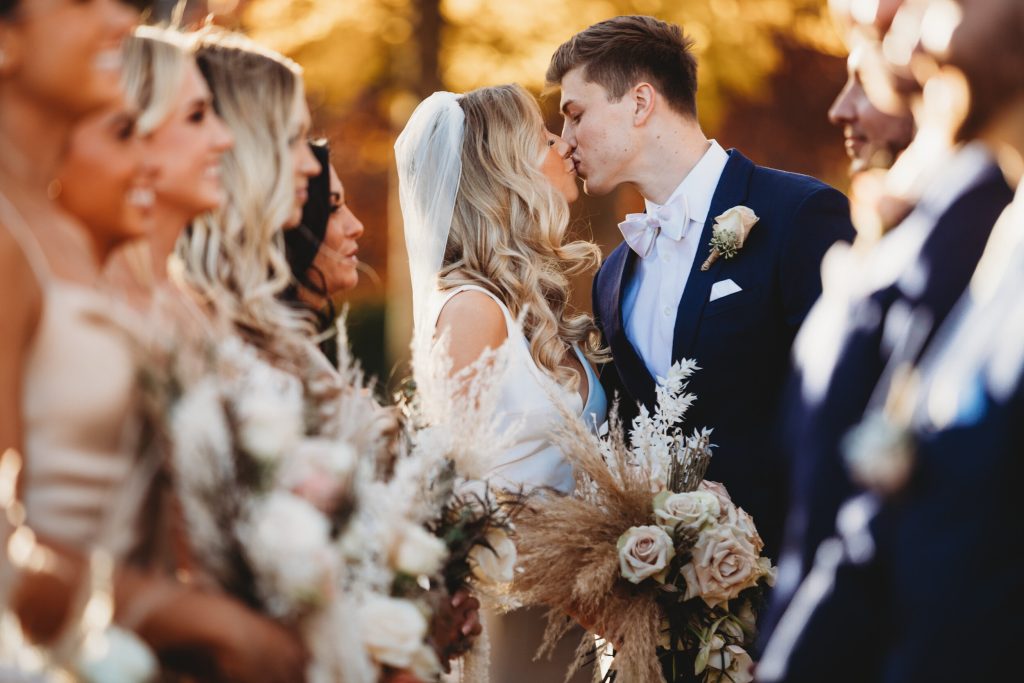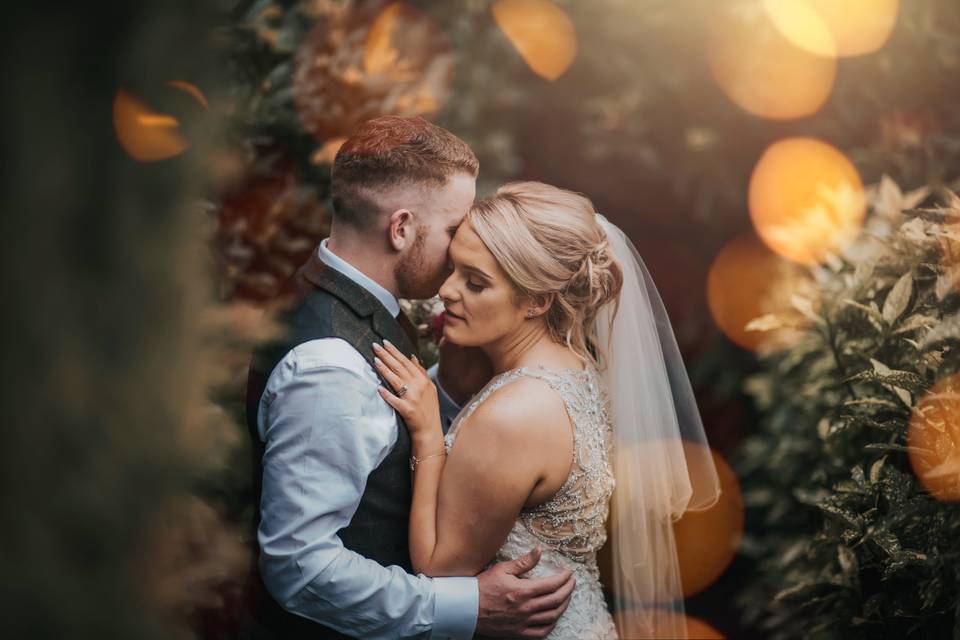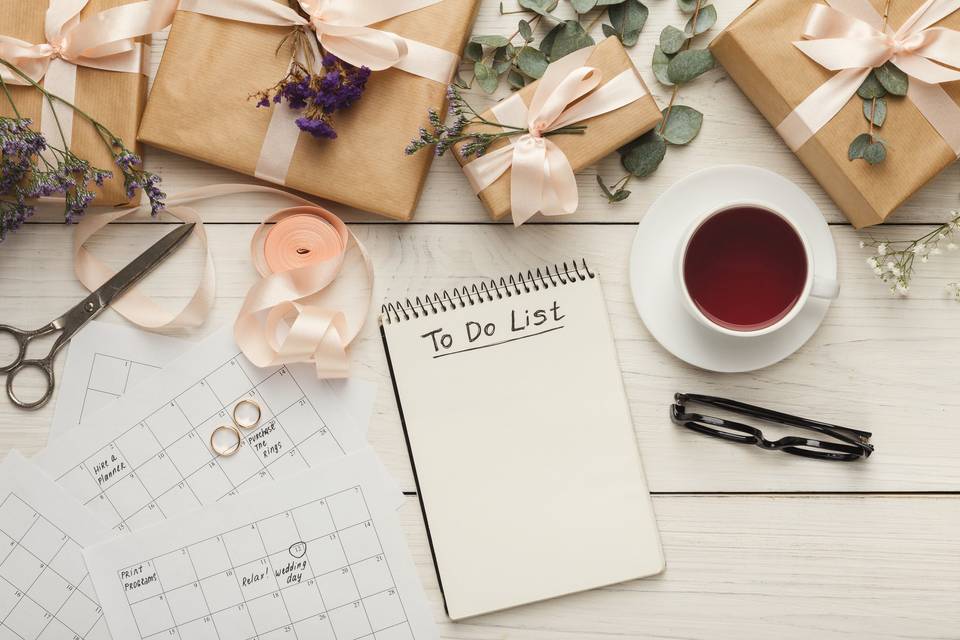How to Get The Best Wedding Photos | Tips for Good Wedding Photos
For wedding photos you’ll want to look at for years (and years!) to come, follow these essential tips.
So much of your wedding day is fleeting—the cake will get eaten, the flowers will be donated and the band will have to stop playing eventually—but your wedding photos will be yours to keep forever. You owe it to yourself (and any future generations) to do everything you can to make them look beautiful and feel authentic. Plus, you’ll likely spend a solid chunk of your wedding budget on a photographer, so make the expense worth your while. Here’s how to take good wedding photos, from finding the right pro to posing in front of a camera.

1. Start Searching Early for a Pro
About a year before your wedding date, start your search with the low-hanging fruit: Ask recently married couples you know for photographer recommendations and browse Instagram, photographer portfolios and real weddings for pros whose styles inspire you. Look at a few highlight galleries of weddings from each photographer to get a sense of their quality and aesthetic. But don’t forget these are their best clips out of multiple—sometimes hundreds—of wedding photos, so once you find someone you like, ask to see a full wedding or two.
2. Think Critically
As you review photos, consider key moments you want to capture at your own wedding: Did this shooter get great shots, like candid dance floor snaps and posed family portraits, you’d also like? Look for thoughtful compositions and to see if images and people are in focus (unless they’re meant to be stylistically grainy). Make sure people look relaxed, and not spooked by the camera.
3. Set Up a Meeting
You can’t always properly vet a photographer by looking solely at their work. Once you have a short list of pros whose work you like—and you’ve determined they’re in your price range and free on your date—set up an in-person or video-chat meeting. You should feel comfortable with this person—they’ll be shadowing your every move on your wedding day and interacting with all of your guests. Plus, you’ll likely hire them to take engagement photos too.

4. Compare Packages
Ask what’s included in the standard package, plus any additional fees (think: overtime fees). In particular, find out how many hours of shooting are included. Most packages include about eight hours and cover everything from getting ready to the end of the reception. It’s usually better to pay for more coverage if there’s a chance you’ll run over, especially if you’re planning a big finale exit (overtime is normally charged at a higher rate).
5. Confirm Your Shooter(s)
Larger studios may have more than one photographer on staff, and depending on your contract, the lead one may not be the one shooting your day. Since every pro has a different style, technique and personality, you need to make sure the photographer you interview and click with will be the same person who works your wedding. Also, many top-notch pros include a second shooter in their packages. That way, one can take the formal photos while the other is capturing the cocktail hour. You’ll also get to see two unique angles of key moments, like your first kiss as a married couple or cake cutting.
6. Check References
Online reviews are great, and reading real couples’ reviews should be a big part of your research, but once you’re ready to hire someone, ask to speak to a previous client or two. Ask the couple whether the pro got the shots they wanted and if they were happy with the service, plus any other specific questions you have.
7. Sign a Contract
Once you’ve chosen your photographer, sign a contract that includes everything, from the date of the wedding and the hours they’ll cover to postproduction work and timing expectation.
8. Schedule an Engagement Shoot
Once you hire a photographer, a prewedding photo shoot is never a bad idea. It’s a great opportunity to get comfortable with your photographer and being in front of a lens. You’ll get a gorgeous save-the-date and wedding website photo out of it too. And you’ll be able to give your pro feedback on what photos, poses and cues you liked (and didn’t) before your wedding day.
9. Start Practicing Your Poses
Now that you have your first photo shoot scheduled, it’s time to start practicing your poses! If you’re wondering how to get the best wedding photos, you’ll want to ensure the photographer gets your best angles. Work on your posture and make sure you know the insider secrets to looking your best in photos.
When it comes to tips for good wedding photos, experts suggest turning your torso toward the photographer at a 45-degree angle and holding your neck up to avoid the appearance of double chins. And don’t forget about your hands! Put your hand on your hips, hold your partner’s hand or grab a bouquet. When in doubt, practice your poses in front of the mirror or ask a friend to take practice photos of you together so you are comfortable for when it comes to the real session.
10. Make a (Reasonable) Shot List
Don’t spend time trying to get every last combo of grandparents, siblings and cousins. Stick to the most important shots, and ask honor attendants or another member of the wedding party to help orchestrate them on the day of. Include whether you want shots in black and white or color, and don’t forget to mention any particular décor details you want captured (a flat-lay of your invitation suite, close-up ring shots or the stunning centerpieces your florist worked so hard on). While you’re sending these notes, attach a few photos of yourself you think you look amazing in, so your photographer understands how you want to look on your wedding day. Finally, include any side notes about the actual day, like your grandma has a bad hip and can’t stand too long.

11. Consider Lighting
After creating your shot list, speak with your photographers about where you would like to take pictures at your wedding site. One of the best wedding photography tips involves taking advantage of the lighting. Your photographers should know how to use natural lighting to your advantage, so keep this in mind when choosing indoor and outdoor locations. For example, look for shady spots when you’re taking photos outside and find indoor spots that have windows.
12. Don’t Forget Touch-Up Supplies
Half of understanding how to take wedding photos is ensuring that you look your very best. It’s likely that you’ll get your hair and make up done for you, but with all the running around, you may need some touch ups throughout the day. Pack a kit with Q-tips, blotting paper, bobby pins, waterproof mascara and lipstick. Whether it’s a loose strand of hair or smeared under eye makeup, your kit will ensure you’re camera ready at all times.
13. Be Realistic With Your Schedule
On your wedding day, everything will take longer than you think, from getting your hair done to getting dressed. And mishaps happen—like misplaced boutonnieres or bad traffic—so set a strict day-of timeline that leaves extra time to deal with snafus without cutting into your photography session.
14. Take First-Look Photos
If you don’t want to miss a minute of your cocktail hour, schedule your couple, wedding party and family portrait photos for before the ceremony. Besides being incredibly sweet and emotional, first look photos are a great way to calm your nerves and have a quiet moment with your partner before you say “I do” in front of a crowd.
15. Pick Your Head Up
Photographers like to warn couples against keeping their heads down while walking down the aisle. You might be nervous, but keep your head up, even if smiling isn’t going to happen. A thoughtful or content look is way better than only the top of your heads!
16. Relax and Enjoy Your Day
Try not to sweat the small stuff, like a relocation of your portrait shoot because of rain or a flower girl melt down during family shots. And allow your photographer to keep you on schedule, to frame the shots and to know what will look best—remember, that’s why you hired them. If you’re always looking for the camera, it won’t capture you sharing a look with your new spouse or laughing with your friends. Your photographer should be the one worrying about capturing those moments—not you.
